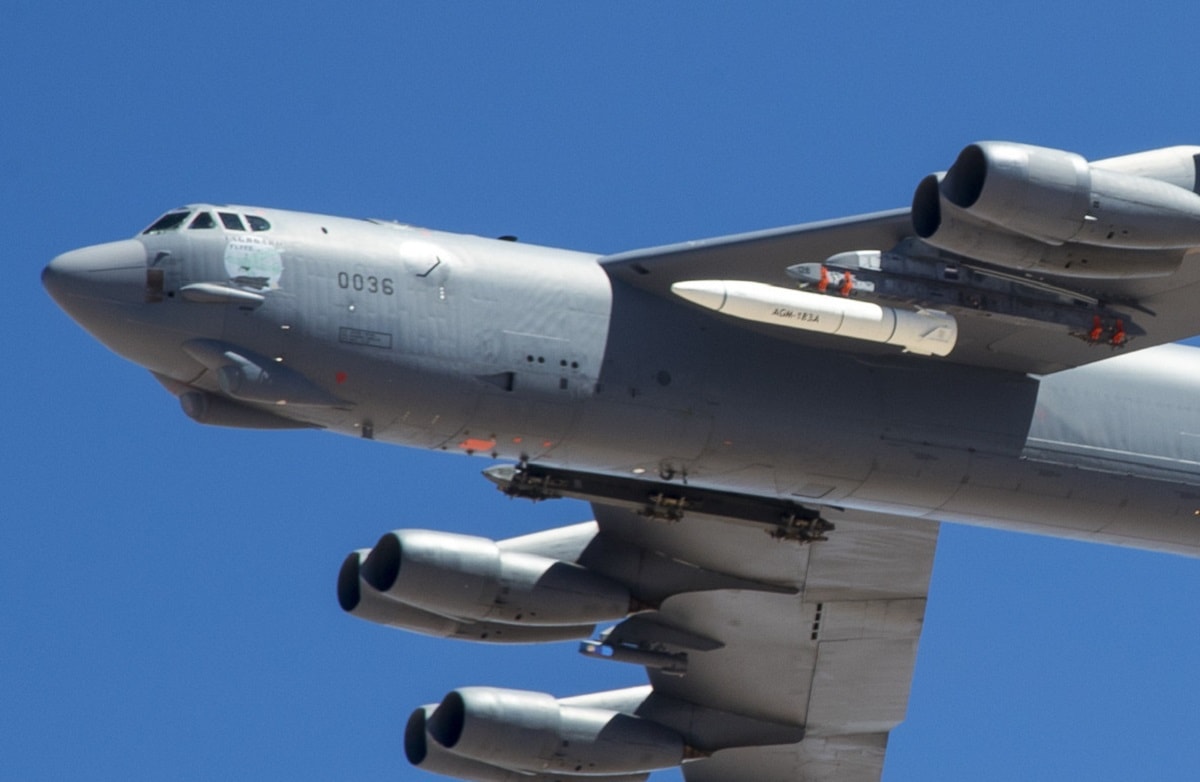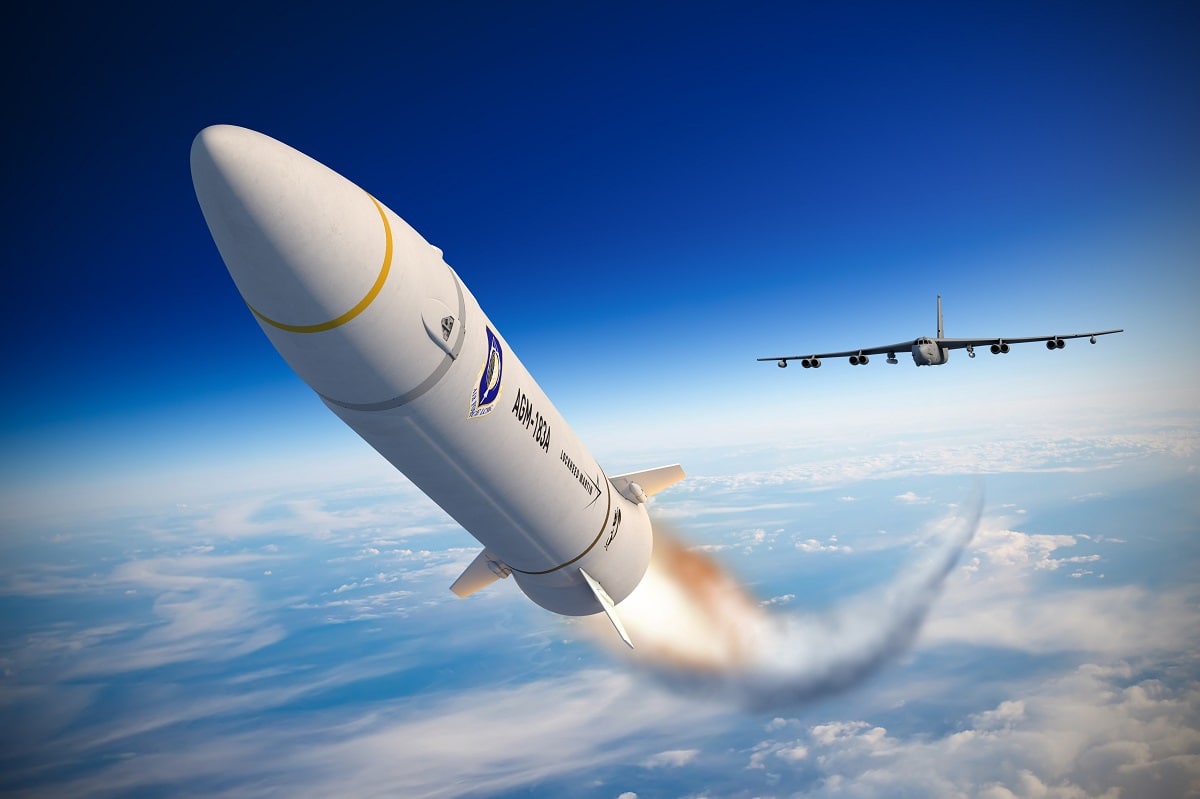The U.S. Air Force is one step closer to a new hypersonic missile capability. Last weekend, the Air Force completed important final testing on the AGM-183A ARRW hypersonic missile.
However, the fate of the specific weapon system is still in doubt.
Final Testing for ARRW
On Sunday, a B-52H Stratofortress strategic bomber conducted a test on the All-Up-Round AGM-183A Air-Launched Rapid Response Weapon (ARRW) at the Reagan Test Site near Kwajalein Atoll in the Pacific Ocean.
The AGM-183A ARRW is a multi-stage, boost-glide munition that can reach hypersonic speeds.
“This test launched a full prototype operational hypersonic missile and focused on the ARRW’s end-to-end performance. [The Air Force] “gained valuable insights into the capabilities of this new, cutting-edge technology,” an Air Force spokesperson said.
The Air Force bomber took off from Andersen Air Force Base in Guam.
However, the Air Force intended testing on the AGM-183A ARRW to benefit its broader hypersonic weapons program. Besides the interest in the AGM-183A ARRW, the Air Force has also been working on the Hypersonic Attack Cruise Missile (HACM).
“This test acquired valuable, unique data, and was intended to further a range of hypersonic programs. We also validated and improved our test and evaluation capabilities for continued development of advanced hypersonic systems,” the service spokesperson said.
Back in March 2023, the Air Force cancelled the AGM-183A ARRW program after repeated failed tests. Lockheed Martin, however, continued with the program despite the cancellation. The Pentagon has been rather mysterious about the fate of the munition and whether it will continue to pursue that option or focus attention and resources to other hypersonic capabilities.
On the other end of the table, Lockheed Martin is confident that the AGM-183A ARRW will be a success.
“Following the recent end-to-end flight test, Lockheed Martin has completed the test program with full confidence in ARRW’s revolutionary capabilities, and we stand ready to deliver this fully-qualified, hypersonic solution to the U.S. Air Force,” the company said in an announcement following the testing.
“Building on ARRW’s industry-leading technology and testing success, Lockheed Martin can quickly deliver additional hypersonic-strike assets that can be rapidly deployed to the U.S. military,” the aerospace giant added.
The Air Force didn’t discuss whether the test was successful, refusing to go into detail about the specifics such as flight time and impact effect.
Hypersonic Weapons
When it comes to conventional military threats, hypersonic weapons are the new kid in town. Essentially ballistic and cruise missiles that can go really fast—we’re talking speeds ranging from Mach 5 to Mach 8, or from 4,000 to 6,000 miles per hour—hypersonic weapons can penetrate most air defenses due to their sheer speed and angle of attack.

EDWARDS AIR FORCE BASE, Calif. (June 12, 2019) B-52 out of EDW carries ARRW IMV asset for its first captive carry flight over Edwards Air Force Base. (U.S. Air Force photo by Christopher Okula)
With limited countermeasures available, hypersonic munitions could be devastating in a near-peer conflict. For example, the U.S. Navy’s aircraft carrier fleet would be extremely vulnerable to Chinese hypersonic munitions without adequate countermeasures.
In many ways, hypersonic technology is revolutionizing warfare, and militaries around the world are scrambling to adjust.
About the Author
Stavros Atlamazoglou is a seasoned defense and national security journalist specializing in special operations. A Hellenic Army veteran (national service with the 575th Marine Battalion and Army HQ), he holds a BA from the Johns Hopkins University, an MA from the Johns Hopkins’ School of Advanced International Studies (SAIS), and is pursuing a J.D. at Boston College Law School. His work has been featured in Business Insider, Sandboxx, and SOFREP.

